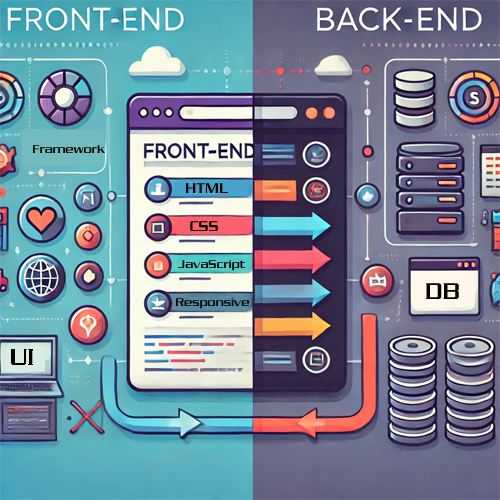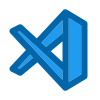Chapter 1: Introduction to Web Development
Welcome to the world of web development! This chapter provides an overview of what web development is, the skills required to get started, and the path to building websites and web applications from scratch.
What is Web Development?
Web development is the process of building and maintaining websites. It involves a variety of tasks, from coding and designing layouts to managing databases and ensuring website security. Web development is divided into two main areas:
- Front-End Development: Focuses on the visual and interactive parts of a website, such as layouts, colors, fonts, and user interactions. Technologies include HTML, CSS, and JavaScript.
- Back-End Development: Involves the server side of a website, managing data, databases, and user authentication. Back-end developers use languages like PHP, Python, Node.js, and SQL.

Key Skills for Web Development
Web development requires a mix of technical and creative skills. Here’s a breakdown of the foundational skills to focus on:
- HTML & CSS: These are the building blocks of web pages. HTML structures content, while CSS styles it.
- JavaScript: Adds interactivity and dynamic content to your website. JavaScript is essential for front-end development.
- Version Control: Git and GitHub are widely used to track changes in code, collaborate with others, and manage versions.
- Responsive Design: Ensures your website looks good on all devices, including desktops, tablets, and smartphones.
- Basic Understanding of Servers: Knowing how servers work and how to configure them locally is essential for development.
The Development Workflow
The development process typically follows a structured workflow, involving planning, coding, testing, and deployment. Here’s a look at the standard workflow for a web development project:
- Planning: Define the purpose of the site, target audience, and design goals.
- Design: Create wireframes or mockups to plan the layout and visual elements of the site.
- Development: Code the front end with HTML, CSS, and JavaScript. Set up the back end if needed.
- Testing: Test for functionality, responsiveness, and cross-browser compatibility.
- Deployment: Push the website to a live server or hosting platform.
Tools of the Trade
Web developers use a variety of tools to make the development process efficient and organized. Here are some essential tools to get started:
- Text Editor or IDE: Visual Studio Code, Sublime Text, or Atom are popular choices for writing code.
- Version Control: Git and GitHub are essential for managing code versions and collaborating with others.
- Browser DevTools: Every major browser (like Chrome, Firefox) has built-in dev tools to inspect and debug websites.
- Design Tools: Figma or Adobe XD can help create visual designs and mockups.
- Package Managers: NPM (Node Package Manager) is used to install libraries and dependencies.





Getting Started on Your Journey
Starting with web development can feel overwhelming, but by learning the basics and practicing consistently, you’ll build the skills needed to create functional websites. Here’s a simple roadmap to help you start:
- Learn HTML and CSS: Start by building basic static websites. Understand how to structure content with HTML and apply styles with CSS.
- Practice JavaScript: Add interactivity to your sites by learning JavaScript fundamentals.
- Experiment with Front-End Libraries: Once comfortable with HTML, CSS, and JavaScript, try using libraries like Bootstrap or Tailwind CSS to streamline styling.
- Understand Version Control: Get familiar with Git and GitHub to manage your projects effectively.
- Build Small Projects: Practice by building projects like a portfolio website or a small blog.
The Path Ahead
As you dive deeper into web development, you’ll uncover more advanced topics like frameworks (React, Vue, Angular), back-end development, and database management. Keep experimenting, building, and learning as you progress on your journey.
Web development offers endless opportunities for growth and creativity. Embrace the challenges, stay updated with new technologies, and, most importantly, enjoy the process of creating something valuable on the web.